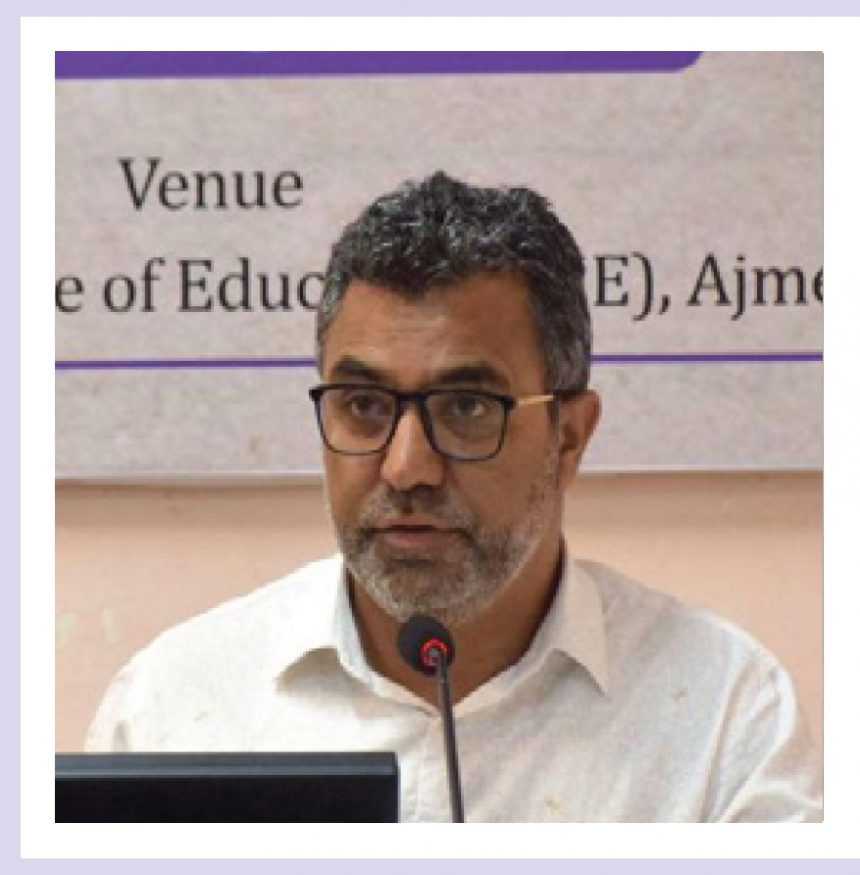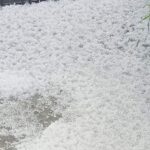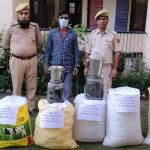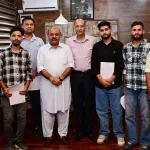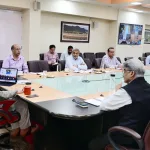In the heart of the Kashmir Division, where snow-capped peaks kiss the sky and the Jhelum River hums ancient lullabies, a new melody is rising from Balvatika classrooms. It’s the sound of laughter, curiosity, and hope, orchestrated by Aayas—newly hired helpers who are transforming early education into a vibrant, joyful, and inclusive journey. Against the diverse landscapes of Srinagar’s bustling Dal Lake, Anantnag’s verdant fields, and Baramulla’s rugged hills, these Aayas are weaving a tapestry of care, culture, and creativity, nurturing the holistic development of young learners in Jammu & Kashmir’s Foundational Stage.
The Balvatika program, catering to children aged 3-6, is the cornerstone of India’s vision for Foundational Literacy and Numeracy (FLN), as championed by the National Education Policy (NEP) 2020 and the National Curriculum Framework for Foundational Stage (NCF-FS) 2022. In Kashmir, where linguistic diversity—Kashmiri, Urdu, Hindi, Phari,Gojri and local dialects like sheena—blends with geographical extremes, Aayas are emerging as vital allies. Tasked with fostering safety, inclusion, and a play-based environment, they are creating spaces where every child, from urban Srinagar to remote Gurez, feels loved and empowered. With motherly affection, they are turning schools into havens of “buzz, energy, and excitement,” revolutionizing education in the Valley.
A Mother’s Embrace in the Valley
Imagine a chilly morning in Kupwara, where mist clings to the meadows. As children trickle into a Balvatika nestled among walnut trees, Aaya Naseema greets them with a warm shawl and a smile that melts the frost. Fluent in Kashmiri, she calls out names in their home language, guiding movement at school opening with care—checking mittens, ensuring safety, and calming first-day jitters. Her presence is a bridge between home and school, grounding children in a region where rugged terrain can make access to education a challenge.
Naseema’s role, aligned with NIPUN Bharat’s equity goals, is expansive. She nurtures physical development by leading children in gentle stretches during circle time, mindful of the cold that stiffens young limbs. For socio-emotional growth, she listens to a shy child’s whispered fears, fostering trust in a compassionate environment. When it’s time for aesthetic and cultural development, Naseema organizes corner time with Jaadui Pitara—a play-based learning kit that sparkles in Kashmir’s context. A felt apple from the kit mirrors the orchards of Pulwama, while a story puppet speaks in Urdu or Kashmiri, connecting children to their roots.
The Jaadui Pitara, a gem of NCF-FS 2022, transforms classrooms into contextualized wonderlands. In a Sopore Balvatika, Aaya Farida uses a wooden boat LTM resembling a shikara on Dal Lake, inviting children to “row” while counting aloud. “When they see their world in the toys, they light up,” Farida says. “It’s like bringing Kashmir’s beauty into our room.” This cultural resonance fosters early identity, letting children from Pahari-speaking Bandipora or Dogri-influenced Doda feel seen and valued.
Safety and Inclusion Amid Diversity
In Kashmir’s varied geography—from Anantnag’s plains to Budgam’s hilly slopes—safety is paramount. Aayas are its custodians, ensuring security in ways that resonate with the region’s challenges. In a Ganderbal Balvatika near the Sindh River, Aaya Zahida teaches handwashing with a rhyme in Kashmiri, turning hygiene into a game. She checks classrooms for hazards, mindful of the Valley’s occasional tremors, creating a secure space where children can explore without fear.
Inclusion, a pillar of NEP 2020, shines brightest in Aayas’ hands. Kashmir’s linguistic mosaic and socio-economic disparities demand equity, and Aayas deliver. In a Srinagar school, Aaya Rubina supports a child with a hearing impairment, using a picture-based communication board—an assistive technology tool—to join a storytelling session. “Every child deserves to belong,” Rubina says, her eyes reflecting the fairness she champions. Her efforts ensure equality, giving children from nomadic Gujjar families or urban slums the same opportunities as their peers.
For socially and economically disadvantaged learners, Aayas are lifelines. In remote Shopian, where apple harvests often keep parents away, Aaya Mehmooda organizes circle time to encourage perspective-taking, helping children share stories of their lives. She fosters self-regulation by guiding a restless child to a quiet corner with a familiar LTM toy—a miniature pheran, the traditional Kashmiri cloak. These acts of inclusion embody justice, ensuring no child is left behind in the FLN journey.
Play: The Language of Kashmir’s Children
Play is the heartbeat of Balvatika, and Aayas are its storytellers. In Kashmir, where landscapes inspire imagination—be it the chinar groves of Budgam or the saffron fields of Pampore—play-based learning is magical syas Ms Rehana Quaser who feels excited to express thanks to have the Aaya in her School. Aayas orchestrate controlled, guided, and free play, aligning with NCF-FS 2022’s holistic vision. During corner/area time, they set up learning areas: a “market” with toy walnuts for counting, a “river” with blue fabric for storytelling, or an art nook with colours inspired by Kashmiri carpets.
In Baramulla, Aaya Shaheena designs a “snow game” where children “build” snowmen with cotton balls, practicing numbers while giggling. The activity, rooted in their winter reality, fosters creativity and critical thinking. Aayas also assist teachers in set induction, warming up children with Kashmiri rhymes before lessons. “When Shaheena sings ‘Harmukh Bartal,’ the children are ready to learn,” says teacher Bilal Ahmad. This collaboration creates a colourful, empathic environment where learning feels like an adventure.
Assistive technology amplifies this magic. In a Handwara Balvatika, Aaya Nargis uses a tablet with audio stories in Gojri for a visually impaired learner, ensuring she joins her peers in circle time. Such tools, championed by NEP 2020, promote equality by removing barriers. Regular health check-ups, another Aaya duty, ensure physical well-being, like when Nargis notices a child’s cough and arranges a visit to the school nurse, reinforcing opportunity for all.
The Aaya Effect: A Cordial Oasis
What sets Aayas apart in Kashmir? It’s their motherly affection, a universal language that transcends the Valley’s diversity. In a Tangmarg Balvatika, I watched Aaya Gulshan lead a circle time activity, her dupatta swaying as children twirled to a Kashmiri folk tune. The room pulsed with energy—voices in Urdu, Kashmiri, and giggles—each child heard, each child cherished. Gulshan’s warmth turned the classroom into a congenial oasis, an eveidence to the “buzz and excitement” Aayas bring.
This “Aaya effect” is reshaping Kashmir’s Foundational Stage. By fostering positive learning habits—like tidying up after play or listening attentively—Aayas build lifelong skills. They guide transitions, from school opening to closing time, with a steady hand, even in snowbound villages where roads are treacherous. Their empathy creates a sympathetic space where mistakes are lessons, not failures.
For disadvantaged learners, the impact is profound. In a Rafiabad school serving migrant laborers’ children, Aaya Saima uses LTM resembling Kashmiri wicker baskets, helping kids connect learning to their world. “When they feel proud of who they are, they dream bigger,” Saima says. This pride fuels curiosity and early identity, giving children the courage to explore amidst Kashmir’s breathtaking yet challenging terrain.
A Legacy of Love and Learning
As Kashmir strides toward its FLN goals, Aayas are the Valley’s heartbeat. Their work aligns with NIPUN Bharat’s mission to ensure every child reads and counts by Grade 3. By using home languages and contextualized tools like Jaadui Pitara, they make learning a celebration of Kashmiri culture. By embracing assistive technology, they uphold NEP 2020’s promise of equity. And by nurturing creativity, critical thinking, and self-regulation, they embody NCF-FS 2022’s holistic vision.
The revolution is blooming like a saffron crocus. With Aayas at the helm, Balvatika classrooms are becoming sanctuaries where every child—from the bustling lanes of Srinagar to the quiet hamlets of Gurez—has the freedom to choose, the space to grow, and the chance to soar. “Being an Aaya is like tending a garden,” Naseema reflects. “Every child is a bud, and I help them bloom.”
As twilight falls over the Valley, the echo of children’s laughter lingers. Aayas lock the school gates, their hearts full, knowing they’ve kindled young minds amidst Kashmir’s mountains and melodies. Balvatikas are no longer just classrooms—they are vibrant ecosystems where children play, learn, and dream, guided by the beautiful Aayas who make Kashmir’s schools pulse with love and possibility.


